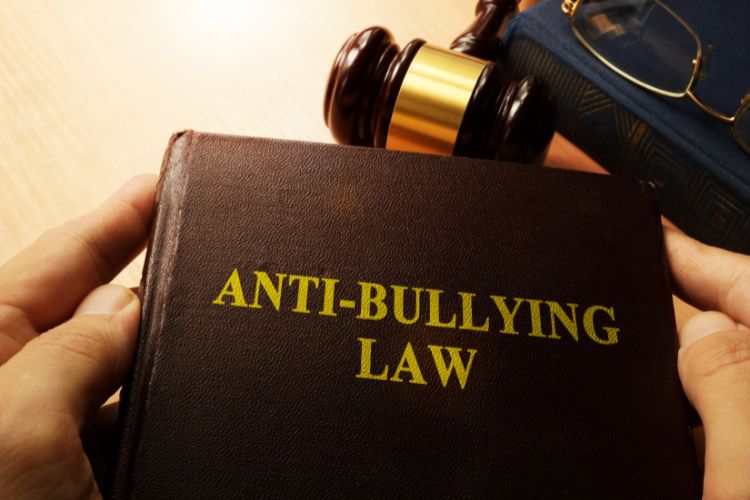

In today’s digital age, our lives have become intertwined with technology, offering us unparalleled connectivity and convenience. However, along with these advancements, we face new challenges in the form of cyberbullying, stalking, and harassment. These pervasive issues have significant implications for personal safety and mental well-being. It is imperative that we address them head-on and equip ourselves with the knowledge and tools to combat them effectively. Addressing these issues is crucial for personal safety and mental well-being. The consequences of cyberbullying, stalking, and harassment can be severe, leading to anxiety, depression, self-esteem issues, and even suicidal thoughts. By understanding the prevalence and impact of these acts, we can actively work towards creating safer digital spaces and fostering healthier online relationships. Firstly, let us establish a clear understanding of these terms.
Cyberbullying refers to the deliberate use of technology, such as social media platforms, instant messaging, or online forums, to intimidate, harass, or threaten individuals. It encompasses various actions, including spreading rumors, posting hurtful comments, sharing explicit content without consent, or engaging in online exclusion or humiliation. Cyberbullying can cause significant emotional distress, damaged self-esteem, and lead to social isolation.
Cyberstalking involves the persistent surveillance, monitoring, or unwanted attention directed at an individual through electronic devices or online platforms. It often manifests as relentless tracking of the victim’s online activities, invasion of privacy, threats, or sending unsolicited messages or explicit content. Cyberstalking instills fear, distress, and a sense of vulnerability in the victim, as their personal boundaries are violated in the digital realm.
Cyber harassment encompasses a wide range of unwelcome and repetitive behaviors designed to annoy, threaten, or intimidate individuals. This can include sending excessive messages, engaging in online impersonation, creating fake profiles or accounts, disseminating personal information without consent, or engaging in online hate campaigns. Cyberharassment aims to cause emotional harm, disrupt daily life, and instigate fear in the victim.

The consequences of these behaviors can be devastating. Victims may experience long-lasting emotional trauma, depression, and social withdrawal. The constant fear and distress they endure can negatively affect their mental health and overall quality of life. To safeguard personal safety and well-being, it is imperative that we address these issues effectively.
By actively combating cyberbullying, harassment, and stalking, we can create a safer digital environment where individuals feel protected, respected, and free from harm. This requires implementing robust measures such as stringent regulations, educational programs, and increased awareness to promote empathy, digital literacy, and responsible online behavior. Providing support systems for victims is also crucial to aid their recovery and help them regain a sense of security.
Ultimately, addressing cyberbullying, harassment, and stalking is essential to protecting the mental well-being of individuals and fostering a healthier digital landscape. By working together to combat these issues, we can create a more inclusive, empathetic, and safer online space for everyone.
Cyberbullying has emerged as a significant concern in the digital age, with its far-reaching consequences impacting individuals’ personal safety and mental well-being. By delving into the definition, forms, platforms, and consequences of cyberbullying, we can gain a comprehensive understanding of this pervasive issue.
Cyberbullying takes various forms, including online harassment, trolling, and cyberstalking.
Cyberbullying can occur across a range of platforms and mediums. Social media platforms like Facebook, Twitter, Instagram, and Snapchat are frequently used for cyberbullying, as they provide a wide reach and anonymous communication options.
Instant messaging apps, online forums, and gaming platforms also serve as conduits for cyberbullying. The internet’s anonymity and ease of access contribute to the proliferation of such behavior.

The psychological and emotional toll inflicted on victims of cyberbullying is profound. Constant exposure to online abuse, threats, and humiliation can lead to anxiety, depression, low self-esteem, and even suicidal ideation.
The 24/7 nature of online communication means victims may feel trapped and unable to escape the torment, affecting their overall well-being and ability to function in daily life. The anonymity of cyberbullying perpetrators exacerbates the feelings of powerlessness and distress experienced by victims.
Addressing cyberbullying requires a multifaceted approach involving individuals, communities, and institutions. Education plays a pivotal role in raising awareness about the consequences of cyberbullying, promoting empathy, and teaching responsible online behavior. Parents, teachers, and caregivers should be equipped with the knowledge and resources to recognize the signs of cyberbullying and provide support to victims.
Cyberbullying is a pervasive issue with severe consequences for personal safety and mental well-being. Understanding its definition, various forms, platforms used, and legal implications helps us comprehend the magnitude of this problem. By raising awareness, implementing proactive measures, and fostering a culture of empathy and respect both online and offline, we can create a safer digital landscape that promotes personal well-being and protects individuals from the detrimental effects of cyberbullying.
Cyberbullying has legal implications, and laws and regulations have been implemented to address this issue. Depending on the jurisdiction, cyberbullying may be considered a criminal offense, leading to legal consequences for perpetrators. In some cases, civil lawsuits can be filed against cyberbullies for defamation, intentional infliction of emotional distress, or invasion of privacy.
Educational institutions and workplaces also impose disciplinary actions for cyberbullying incidents, aiming to deter such behavior and protect the well-being of their communities.
Online platforms have a responsibility to enforce robust community guidelines and provide mechanisms for reporting and addressing cyberbullying incidents promptly. Implementing effective moderation systems and providing mental health resources can contribute to creating safer digital spaces.
Collaboration between law enforcement agencies, legal authorities, and social media platforms is essential in identifying cyberbullies and holding them accountable for their actions.
Encouraging victims to report incidents of cyberbullying and providing them with access to support networks, helplines, and counseling services are vital steps in mitigating the impact of cyberbullying.

It is crucial to be aware of the signs indicating stalking behavior and persistent harassment. These signs may include unwanted messages or comments, excessive monitoring of an individual’s online activity, following their digital footprint, making false accusations, or repeatedly contacting them despite their expressed desire for no contact. Recognizing these signs can help victims seek appropriate support and intervention.
Online stalking can take different forms, including intimate partner stalking, celebrity stalking, and revenge stalking.
Online stalking and harassment can have severe psychological effects on victims. They may experience heightened anxiety, fear, depression, and a constant sense of being watched or targeted.
These behaviors can significantly impact their mental well-being, daily functioning, and overall quality of life. Early intervention is crucial to mitigate the psychological harm caused by stalking and harassment, providing victims with the necessary support, protection, and resources to address their experiences.
Addressing stalking and harassment requires a multidimensional approach. Educating individuals about these behaviors, promoting healthy online boundaries, and encouraging open communication can help prevent and mitigate incidents. Developing comprehensive legal frameworks that recognize the severity of online stalking and harassment is also essential, ensuring that victims have legal recourse and protection. Furthermore, providing support services, counseling, and mental health resources to victims is vital in assisting their recovery and well-being.

Ensuring personal safety and preventing incidents of cyberbullying, cyberharassment, and stalking require proactive measures and effective prevention strategies. By implementing the following safety measures and promoting responsible online behavior, individuals can protect themselves and reduce the risk of becoming victims.
Protecting personal information is essential to prevent cyberbullying, cyber harassment, and stalking. Avoid sharing sensitive details like full names, addresses, phone numbers, or passwords online. Regularly review and update privacy settings on social media platforms to limit access to personal information.
Creating strong, unique passwords for all online accounts is crucial. Use a combination of uppercase and lowercase letters, numbers, and symbols. Enable two-factor authentication whenever possible, adding an extra layer of security to prevent unauthorized access.
Familiarize yourself with the privacy settings of social media platforms. Set controls to limit the visibility of personal information and posts to trusted individuals only. Regularly review and adjust privacy settings as needed to ensure maximum protection.
Educate yourself about risky online behaviors that can lead to cyberbullying, stalking, or harassment. Avoid engaging in or sharing provocative, offensive, or harmful content. Be cautious when interacting with strangers online and avoid sharing personal information with unknown individuals.
Promote digital citizenship and responsible online behavior among individuals, especially children, and adolescents. Teach them about the importance of treating others with respect, empathy, and kindness in digital spaces. Encourage open communication and reporting of any instances of cyberbullying, harassment, or stalking.
Encourage individuals to build strong support networks consisting of trusted friends, family members, and mentors. Having someone to confide in and seek guidance from can provide emotional support and assistance in dealing with, cyber harassment, bullying, or stalking incidents.
Advocate for the reporting and blocking of individuals engaging in cyber stalking, harassment, or bullying behavior. Social media platforms and online service providers often have reporting mechanisms in place to address such issues. Prompt reporting can lead to swift actions being taken against offenders.
In cases of cyberbullying, stalking, or harassment it is essential to document evidence, such as screenshots, messages, or timestamps. This evidence can be valuable when reporting incidents to authorities, schools, or online platforms.
Encourage individuals who have experienced cyberbullying to seek support from trusted adults, counselors, or helplines specializing in these areas. Professional help can provide guidance, emotional support, and resources to cope with the effects of such incidents.
Foster empathy and digital resilience by encouraging individuals to think before they post or comment online. Promote positive online interactions and discourage participation in or sharing of harmful content. Developing digital resilience can help individuals handle and overcome negative experiences more effectively.

When faced with cyberbullying, stalking, or harassment, it is essential for victims to take proactive steps to protect themselves and seek support. The following strategies can empower individuals in responding effectively to such incidents.
Victims of cyberbullying, stalking, or harassment should prioritize their well-being and mental health. Strategies may include:
It is crucial to gather evidence of cyberbullying, stalking, or harassment. Victims should:
Reporting incidents is essential to address cyberbullying, stalking, or harassment. Victims should:
In severe cases, victims may need to consider legal options. This may involve:
Victims should be aware of available support resources and helpline numbers:
Promoting awareness and education is crucial in preventing and addressing cyberbullying, stalking, and harassment. By involving parents, educators, and communities, implementing digital literacy programs, raising awareness, and fostering empathy, we can create safe and inclusive online environments.
Parents, educators, and communities play a pivotal role in addressing these issues. They should:
Implementing digital literacy programs is essential for empowering individuals to navigate online spaces safely. Such programs should:
Raising awareness is crucial to address these issues effectively. Awareness campaigns, workshops, and discussions should:
Fostering empathy and promoting positive online behavior are essential for creating inclusive digital environments. This can be achieved by:
By promoting awareness and education, we can empower individuals to prevent and address cyberbullying, stalking, and harassment effectively. Together, parents, educators, communities, and individuals can create safe, inclusive, and respectful online environments where personal safety and well-being are valued.
When facing cyberbullying, stalking, or harassment, it’s crucial to report the incidents promptly to seek a resolution and protect yourself. Start by saving and documenting any evidence such as screenshots, messages, or emails that demonstrate the bullying or harassment. Report the issue to the relevant platform or website where the incidents are occurring, using their reporting tools or contacting their support team. If the situation involves threats, intimidation, or illegal activities, notify your local law enforcement agency and provide them with a detailed report, including the evidence you have collected. Reach out to trusted adults, parents, teachers, or counselors who can offer guidance and support. Remember, reporting is a crucial step in addressing cyberbullying, stalking, and harassment, and it empowers authorities and platforms to take appropriate action against the perpetrators.
In the ever-evolving digital landscape, the importance of addressing cyberbullying, stalking, and harassment for personal safety and mental well-being cannot be overstated. This comprehensive guide has explored the definitions, forms, platforms, consequences, and prevention strategies associated with these issues. It has emphasized the crucial role of awareness, education, and proactive measures in creating safer online environments and supporting victims.
By understanding the nature and impact of cyberbullying, stalking, and harassment, individuals are better equipped to protect themselves and seek appropriate support. Implementing safety measures such as securing personal information, utilizing strong passwords, and understanding privacy settings helps mitigate risks. Recognizing signs, documenting incidents, reporting to relevant authorities, and seeking legal recourse when necessary empower victims to take action.
Promoting awareness and education involves the collaboration of parents, educators, and communities. By teaching responsible online behavior, implementing digital literacy programs, and fostering empathy, we can create inclusive online environments that prioritize respect and kindness. Encouraging positive online interactions and providing support resources further contribute to the overall well-being of individuals.
Ultimately, addressing cyberbullying, stalking, and harassment requires a collective effort. It necessitates a commitment to creating a culture of digital responsibility, empathy, and respect. By empowering individuals, raising awareness, and implementing preventive measures, we can build a safer digital landscape where personal safety and mental well-being are upheld.